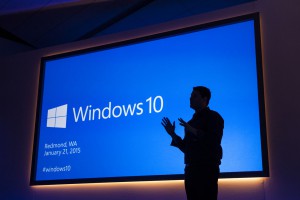Below you will find pages that utilize the taxonomy term “Azure”
Microsoft Ignite - Azure announcements and more
Just recently I attended Microsoft Ignite, Microsoft’s annual flagship technology conference with a focus on cloud and developers. The key theme this year was around “Tech Intensity” that Satya also talked about on LinkedIn earlier this year. Here is a quote from the LinkedIn post:
There are two aspects to tech intensity: First, every organization will need to be a fast adopter of best-in- class technology, and equally important, they will need to build their own unique digital capabilities, which starts with workers who are deeply knowledgeable about the latest technology. I think of tech intensity as being an equation – (tech adoption) ^ tech capabilities = tech intensity – and as a company Microsoft is focused on providing the inputs to help our customers solve it.
APM with Microsoft .NET Core on Azure
One of the things I am very interested in is the .NET stack and especially the .NET Core platform. In this blog post I want to briefly highlight what it takes to get a sample .NET Core application up and running on Azure and how to use New Relic’s Application Performance Monitoring (APM) to monitor this application.
Please note: while I am writing this, the latest version of .NET Core SDK is .NET Core 2.0 Preview 2; dependent upon how you get the SDK, there is already a preview 3 of the .NET Core CLI out there, but this is currently not supported on Azure. You can check for support by using a Developer Console (Developer Tools –> Console of an Azure App Service) within the Azure portal and navigate to D:\Program Files (x86)\dotnet\sdk.
Azure Mobile Center ... and the art of debugging :-)
As a side project, I recently worked on creating a mobile app for Android (and iOS to be completed). To be honest, the development effort was quite straight forward. The development stack focused on Xamarin, because I do not know a thing about creating a native app for Android nor iOS. But, I do know C# … so, for me this was a natural choice :-)
My knowledge in the area of Xamarin was quite limited and I did not create an app for Android or iOS before. However, the path from idea to prototyping was really smooth. There are a ton of kickstart packages out there and the documentation is amazing. You’ll find tons of articles, knowledge base and other posts that are really helpful.
Re-architect applications for the cloud
The path towards cloud-native applications is being adopted by more and more companies. For green-field applications this is a natural choice to architect your applications in a way so that they can be developed, deployed and operated in a cloud environment. This of course could mean on-prem, hybrid or public cloud.
When thinking about your heritage applications and your desire to modernize those, a cloud migration isn’t typically an easy thing to do. Not primarily because of technical reasons, but typically because they exist for a reason and in many cases these applications are mission-critical. Once you made a transformation decision and you created a business case, the next step is to come up with a suitable roadmap for the application. In a previous post, I described the major approaches of such a transformation. In my opinion there is only one suitable way if you truly want to leverage cloud-native concepts and make use of benefits from a cloud deployment … and that is a re-architecture.
Windows 10 and Microsoft Azure Active Directory
 I have been using Windows 10 for quite a while now … actually from the very first moment Microsoft released their first public preview late in 2014. I absolutely like the look and feel and how the user experience evolved from Windows 8.1. I think it is a much more intuitive way to use your computer for work and play. I am using it on a tablet and it works great with touch, but also mouse and keyboard.
I have been using Windows 10 for quite a while now … actually from the very first moment Microsoft released their first public preview late in 2014. I absolutely like the look and feel and how the user experience evolved from Windows 8.1. I think it is a much more intuitive way to use your computer for work and play. I am using it on a tablet and it works great with touch, but also mouse and keyboard.
Microsoft and Oracle announce enterprise partnership
Microsoft Corp. and Oracle Corp. yesterday announced a partnership that will enable customers to run Oracle software on Windows Server Hyper-V and in Windows Azure. Customers will be able to deploy Oracle software — including Java, Oracle Database and Oracle WebLogic Server — on Windows Server Hyper-V or in Windows Azure and receive full support from Oracle. Terms of the deal were not disclosed.
For additional information:
Microsoft Press Release at https://www.microsoft.com/en-us/news/Press/2013/Jun13/06-24WSNewsPR.aspx
Windows Azure: updates from the spring release
Below please find some new information on Windows Azure and related information:
- Now Available: New Services and Enhancements to Windows Azure: https://azure.microsoft.com/en-us/blog/now-available-new-services-and-enhancements-to-windows-azure/
- Announcing New Windows Azure Services to Deliver “Hybrid Cloud”: https://azure.microsoft.com/en-us/blog/announcing-new-windows-azure-services-to-deliver-hybrid-cloud/
- Case Study: E-Publisher Aims to Triple Revenues by Switching from Amazon to Windows Azure: https://t.co/Y4srAaiq
Enjoy and let me know if you have any questions!
Microsoft Virtual Academy (MVA)
If you are interested in cloud technologies, this is a great place to learn more about all Microsoft Cloud Technologies. You will find information on topics such as Hyper-V, SQL Azure, Windows Azure, virtualization and much more. I think it is a great source of information and learning experience.